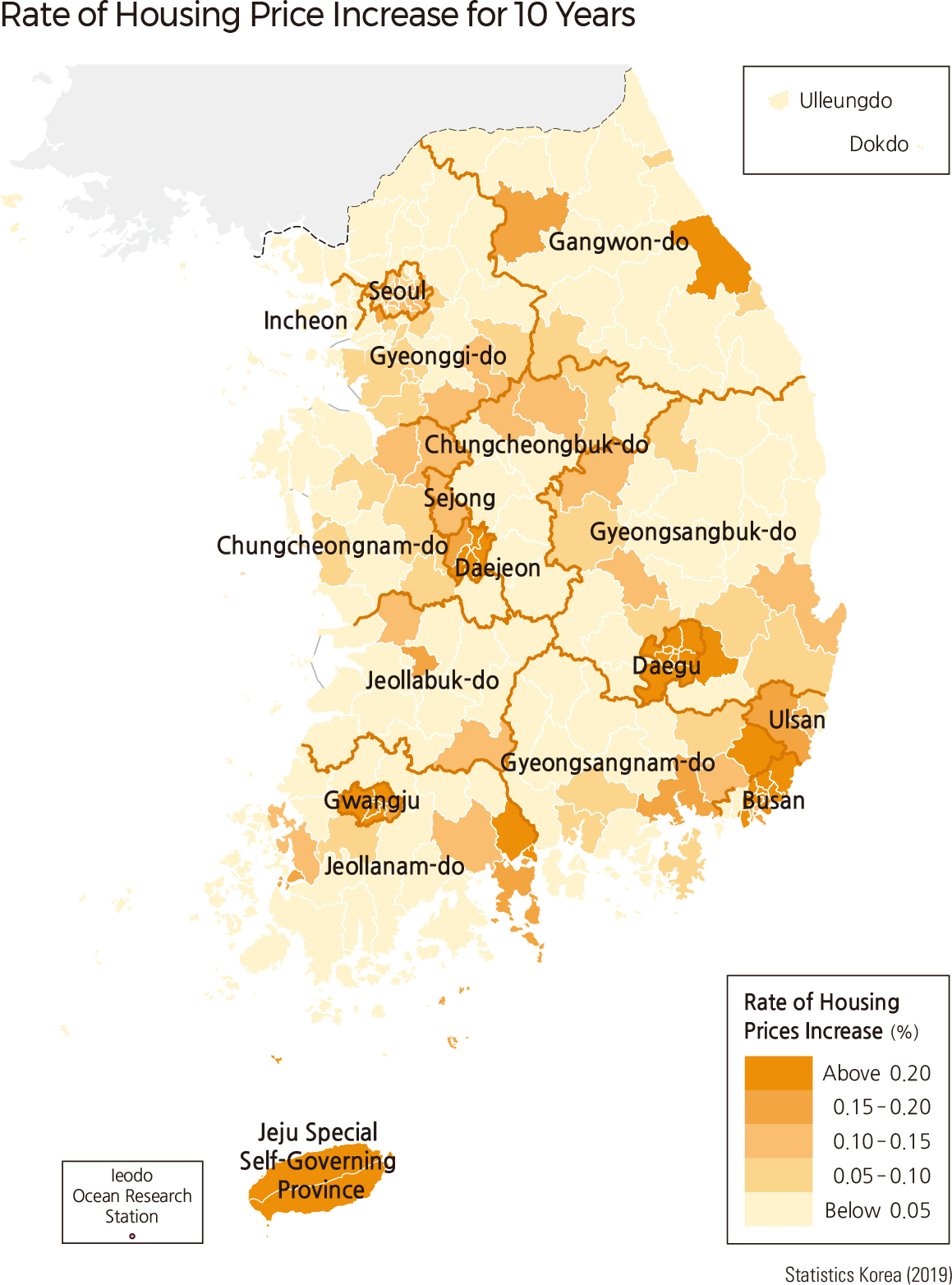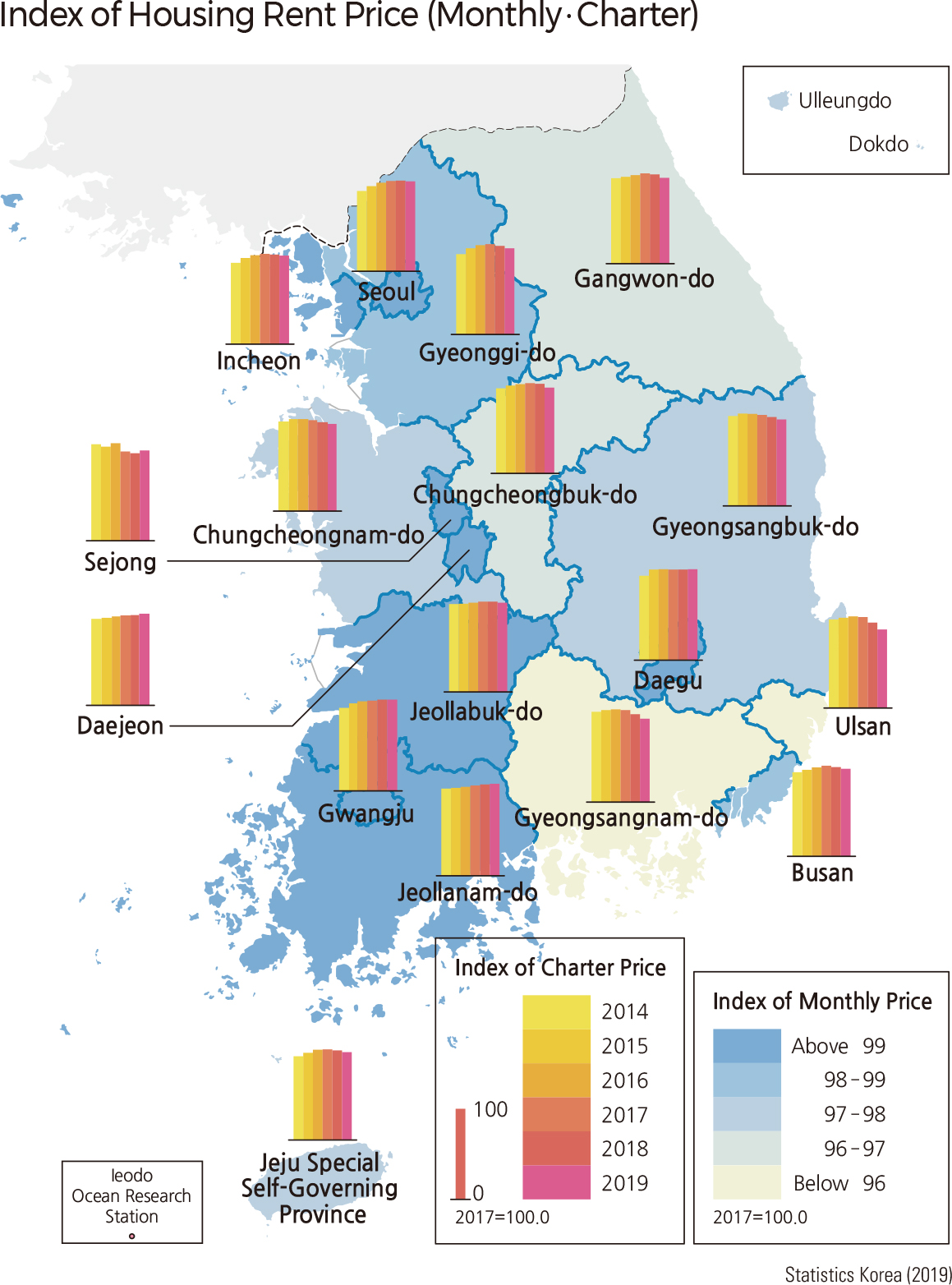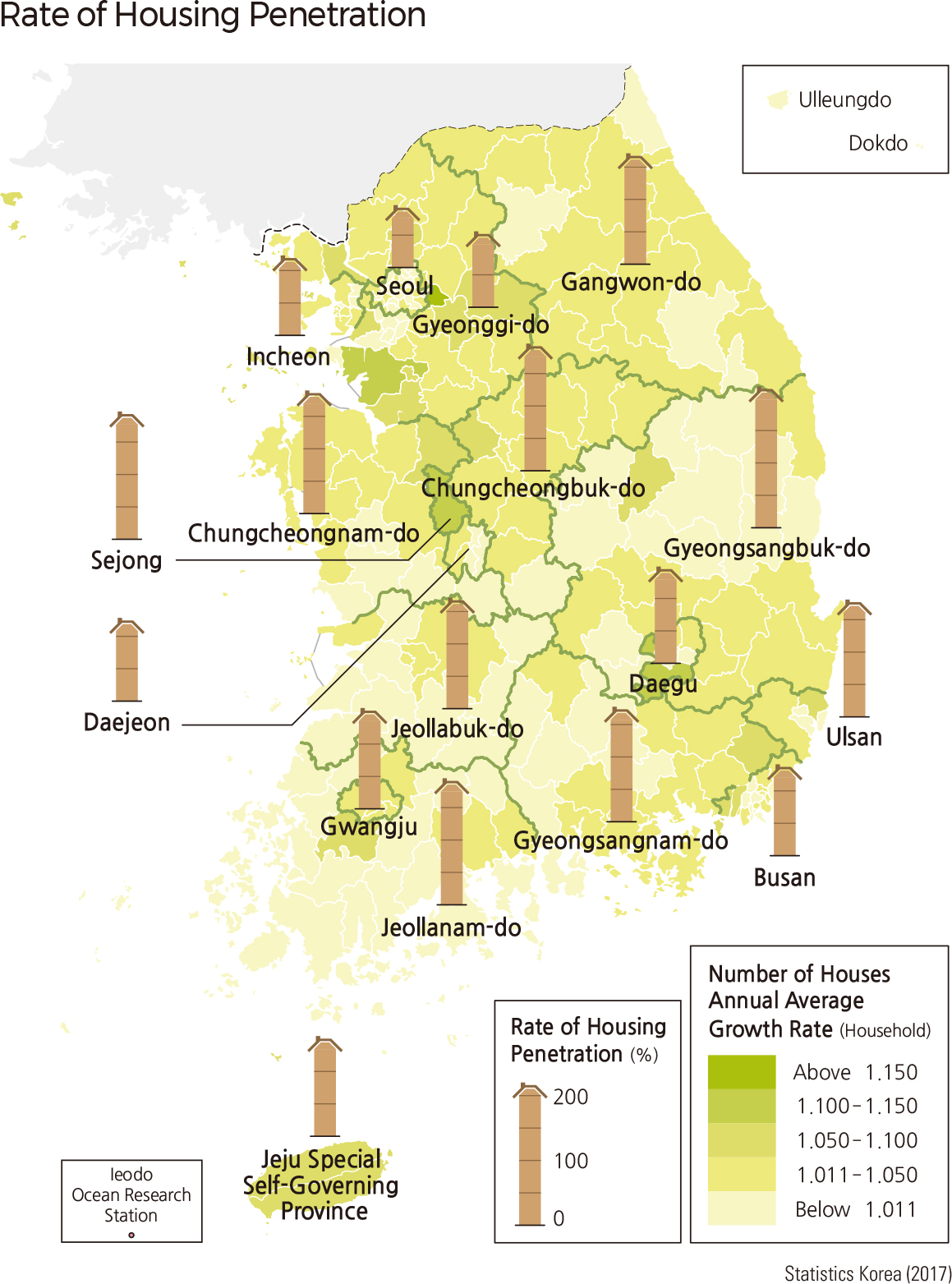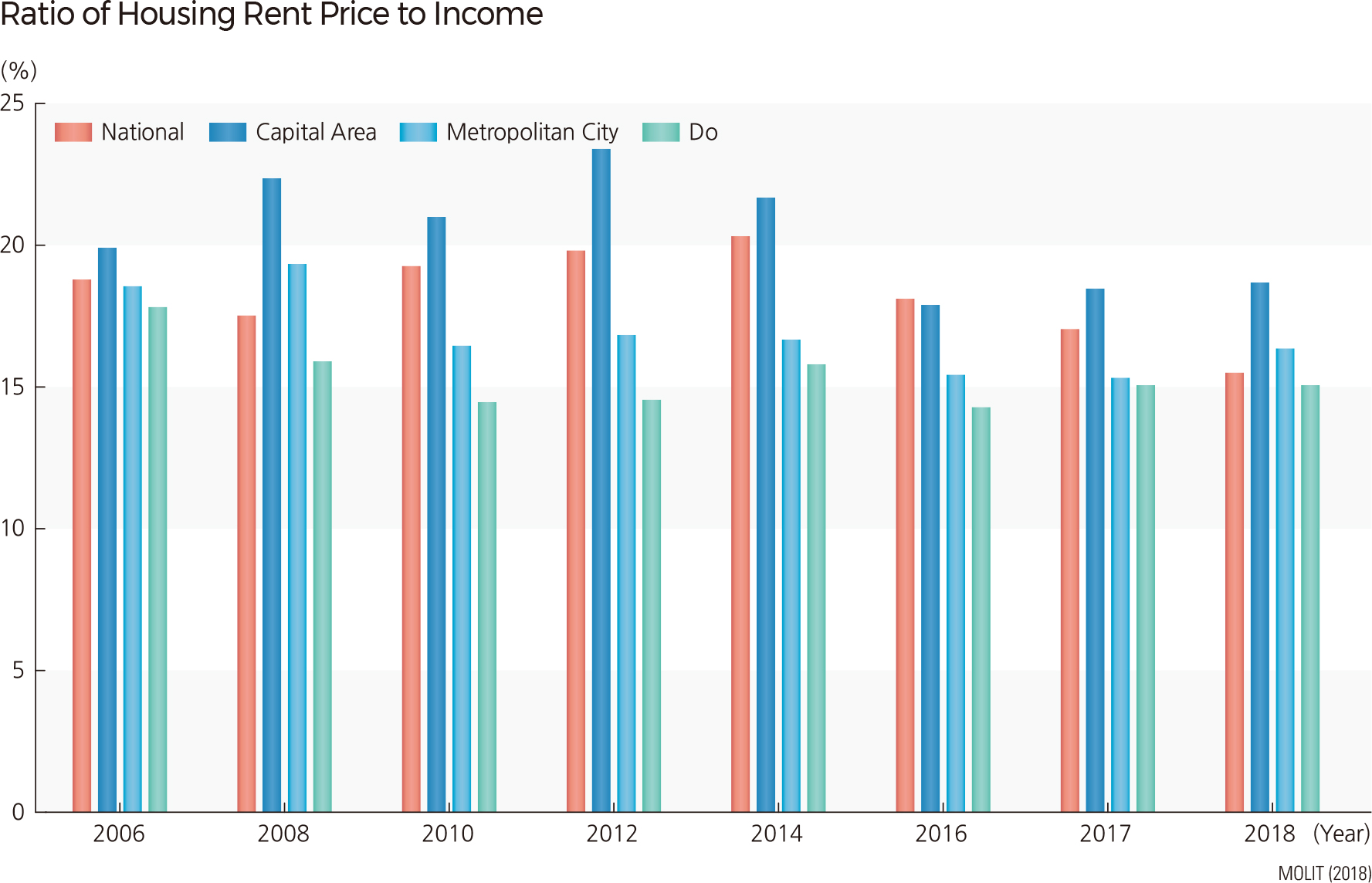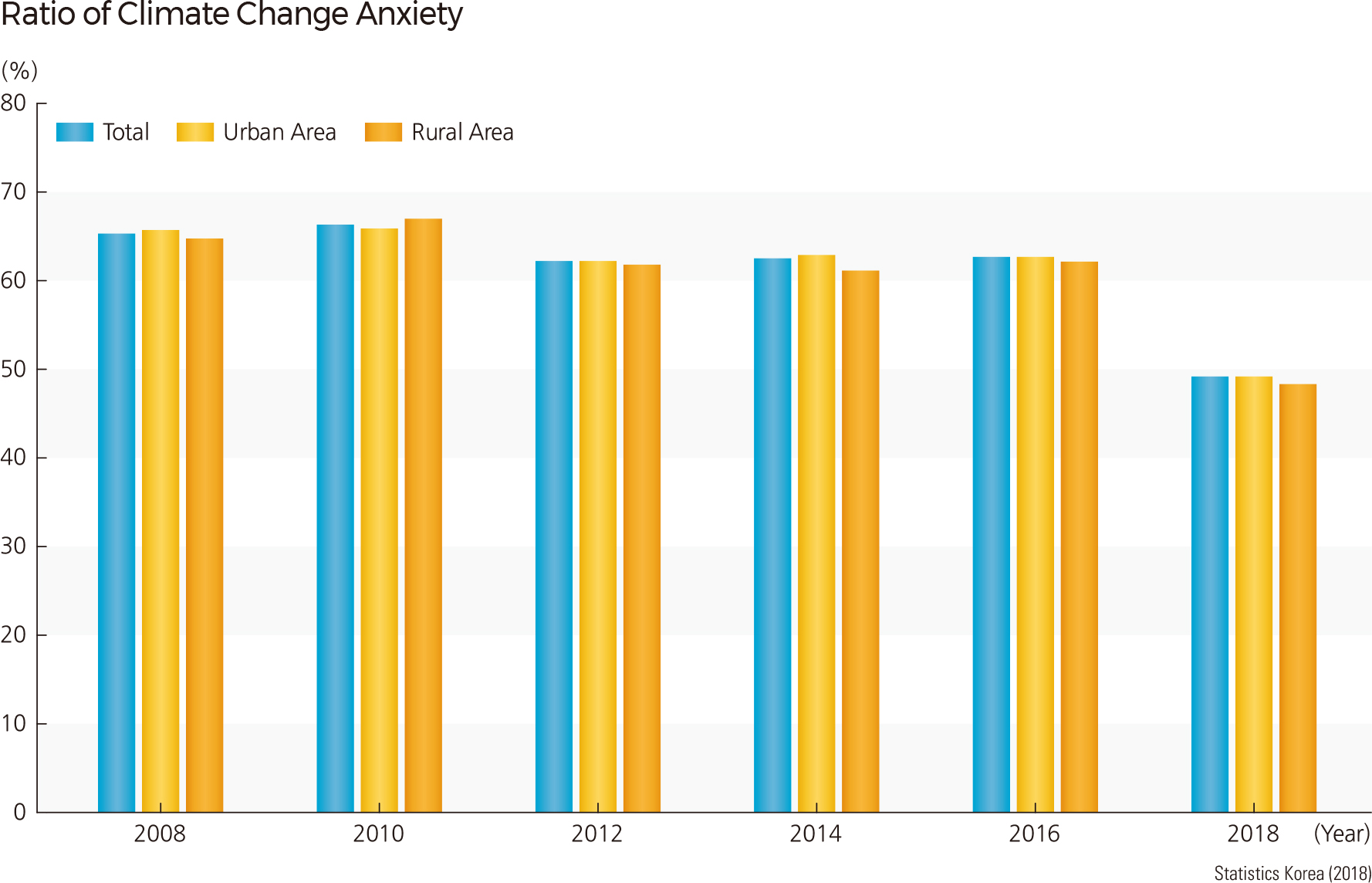English I 2019
Housing refers to the services enjoyed in the living space and is about not only personal consumption but also social consumption. Therefore, although it should be regarded as a personal asset, housing is dealt with as a separate factor for the quality of life because it acts as an important factor in determining the Korean quality of life. The environment, on the other hand, has a definite impact on the quality of life. The environment not only affects people's health through fine dust and climate change, but also provides environmental services such as water and nature. The environment is also an important factor in people's choice of residence, and natural disasters can have a big impact on people's wealth and quality of life.
Of the six indicators in the housing category in 2018 (except for commuting hours and the residential environment satisfaction), the proportion of self-owned households, the share of rents, per-capita housing area, and housing of less than the minimum standards were on the rise. In terms of the distribution of self-owned homes (as of 2015), the proportion of self-owned homes was highest, in order, in Jeollanam-do, Gyeongsangbuk-do, and Jeollabuk-do, while Seoul, Gyeonggi, and Sejong scored low. Meanwhile, except for air quality satisfaction and water quality satisfaction among nine indicators in the environment category, fine dust concentration, rural water supply rate, urban park area per capita, soil environment satisfaction, noise satisfaction, green environment satisfaction, and climate change anxiety gradually improved. In terms of the distribution of fine dust perception, it was high in Incheon, Gwangju, and Gyeonggi, while Busan, Jeollanam-do, and Jeju ranked low.
|
